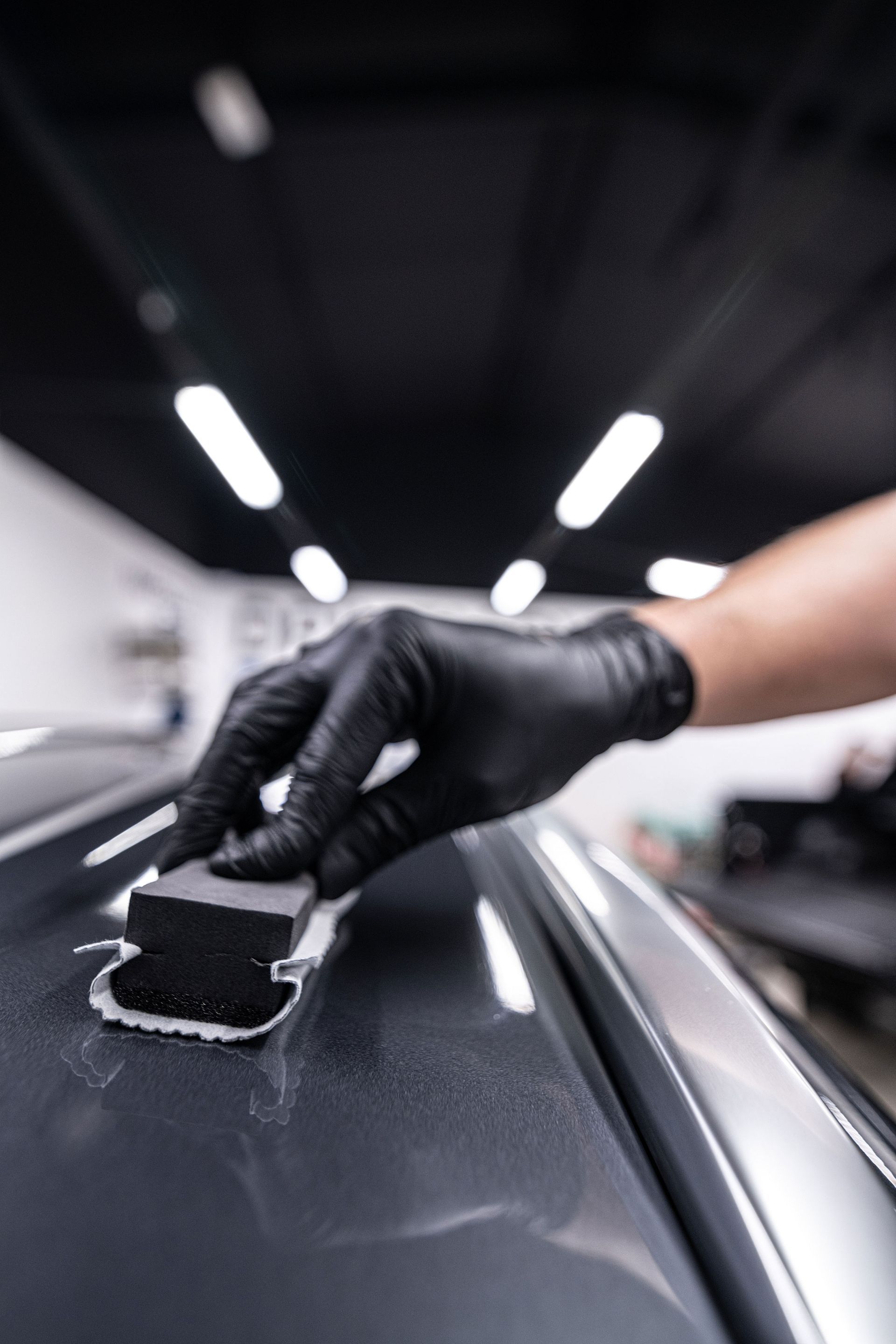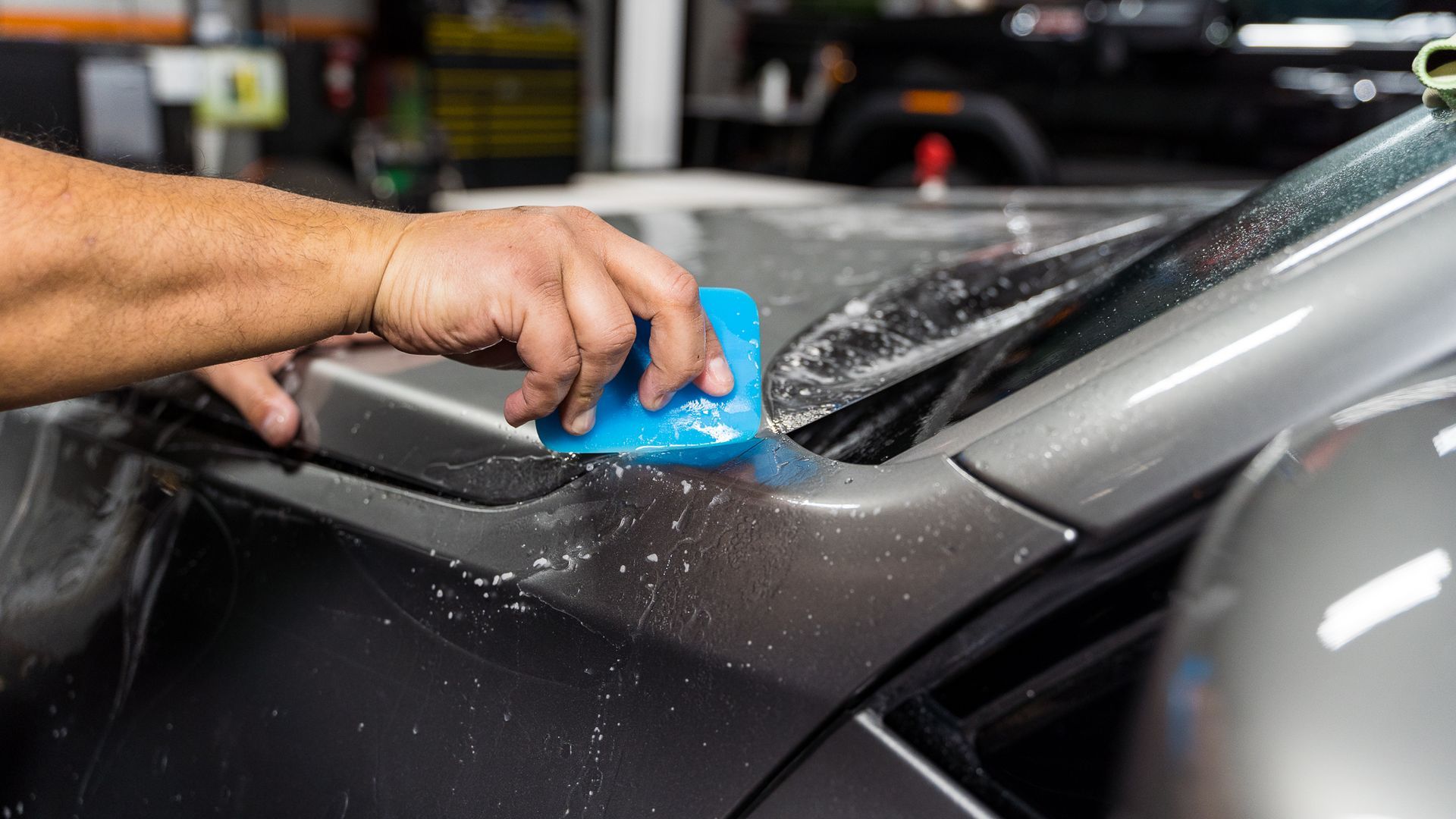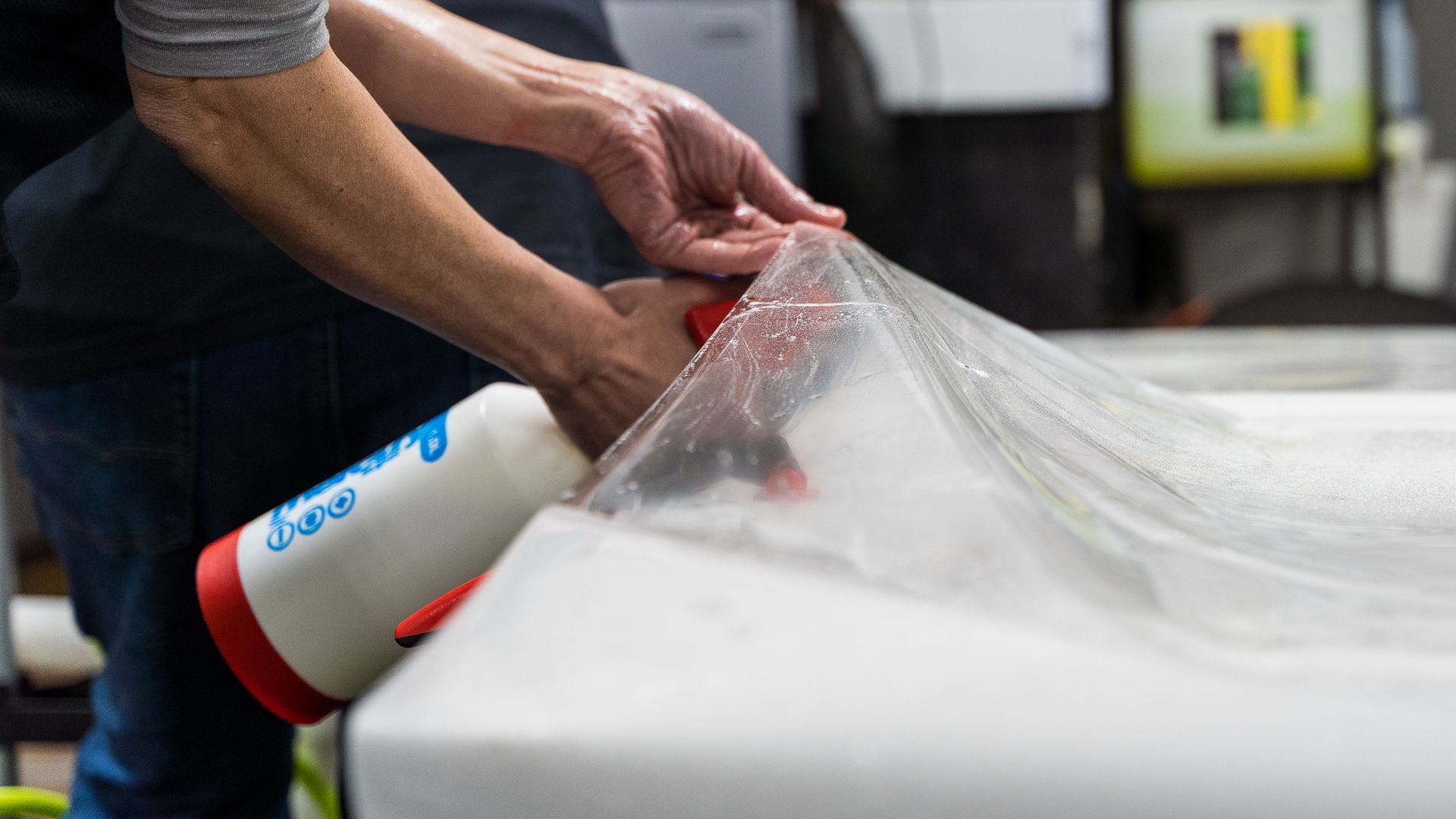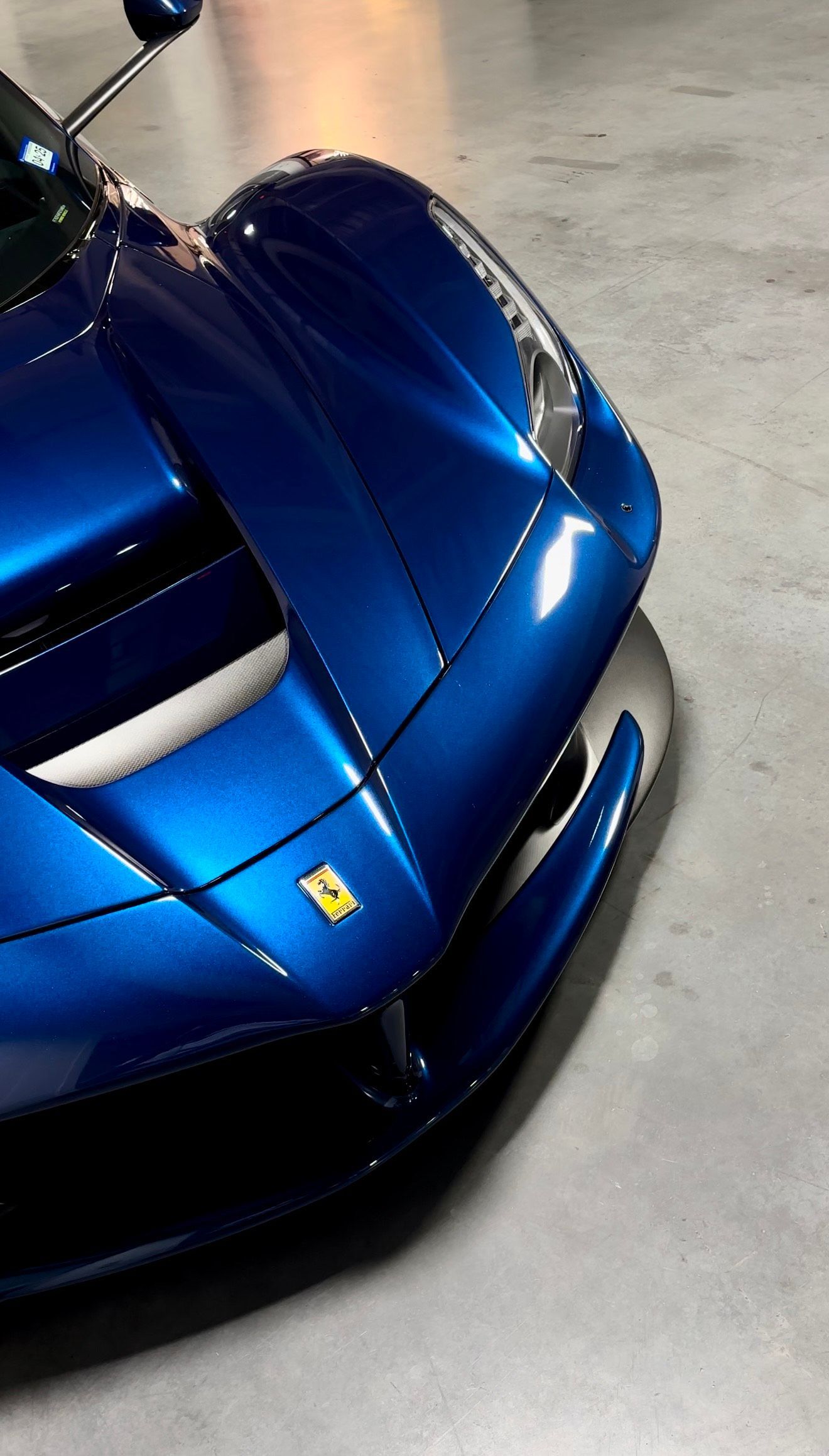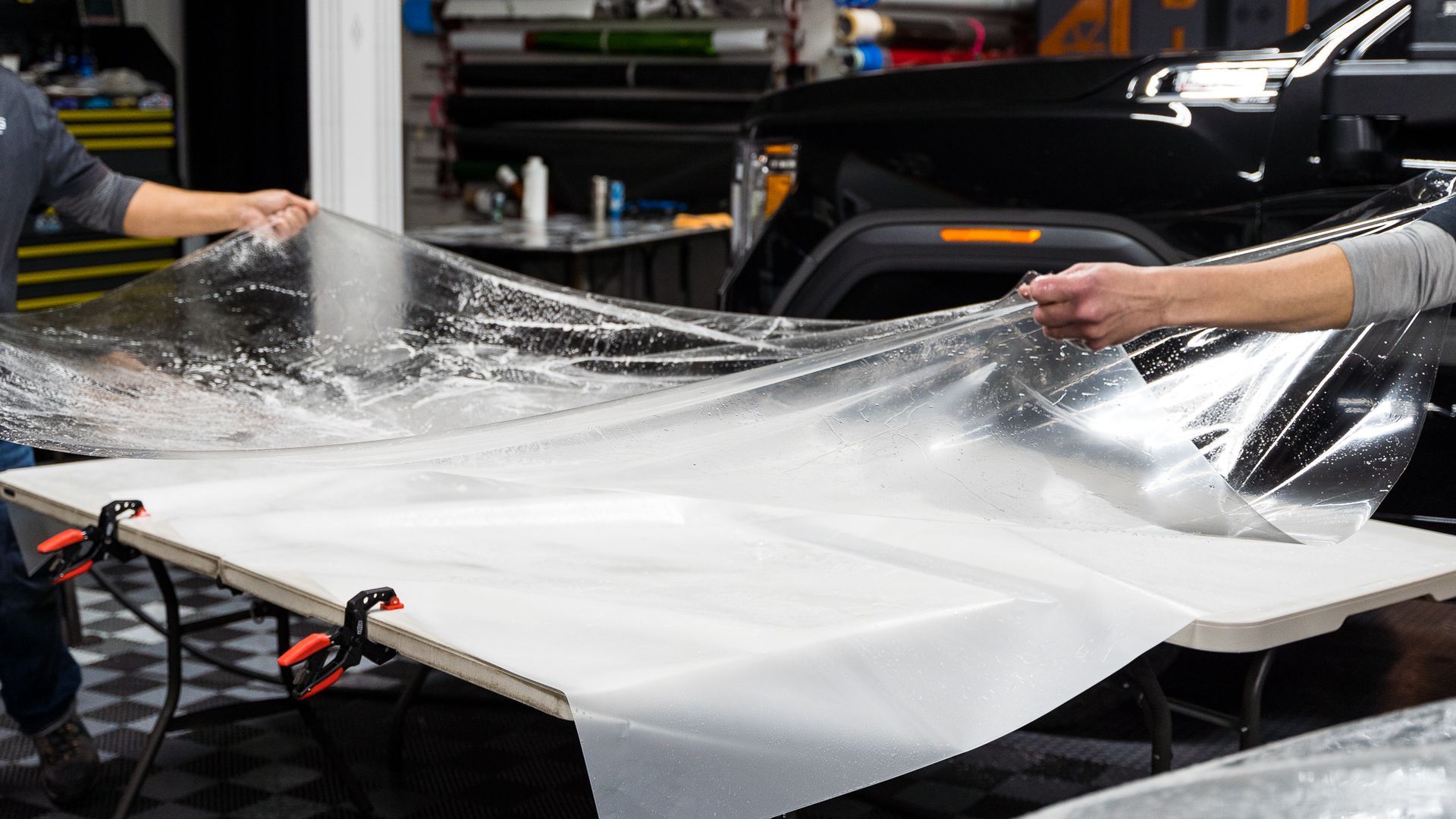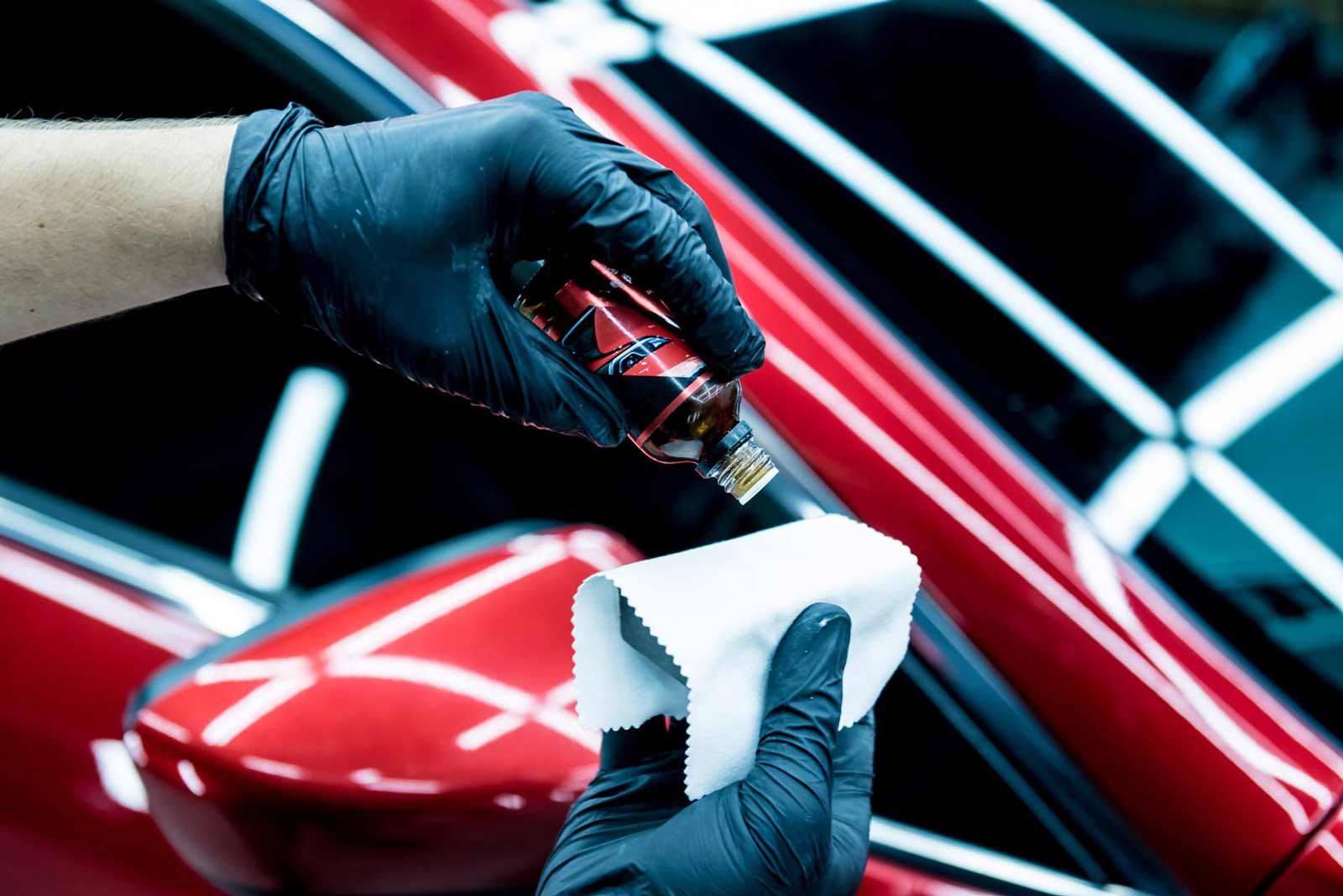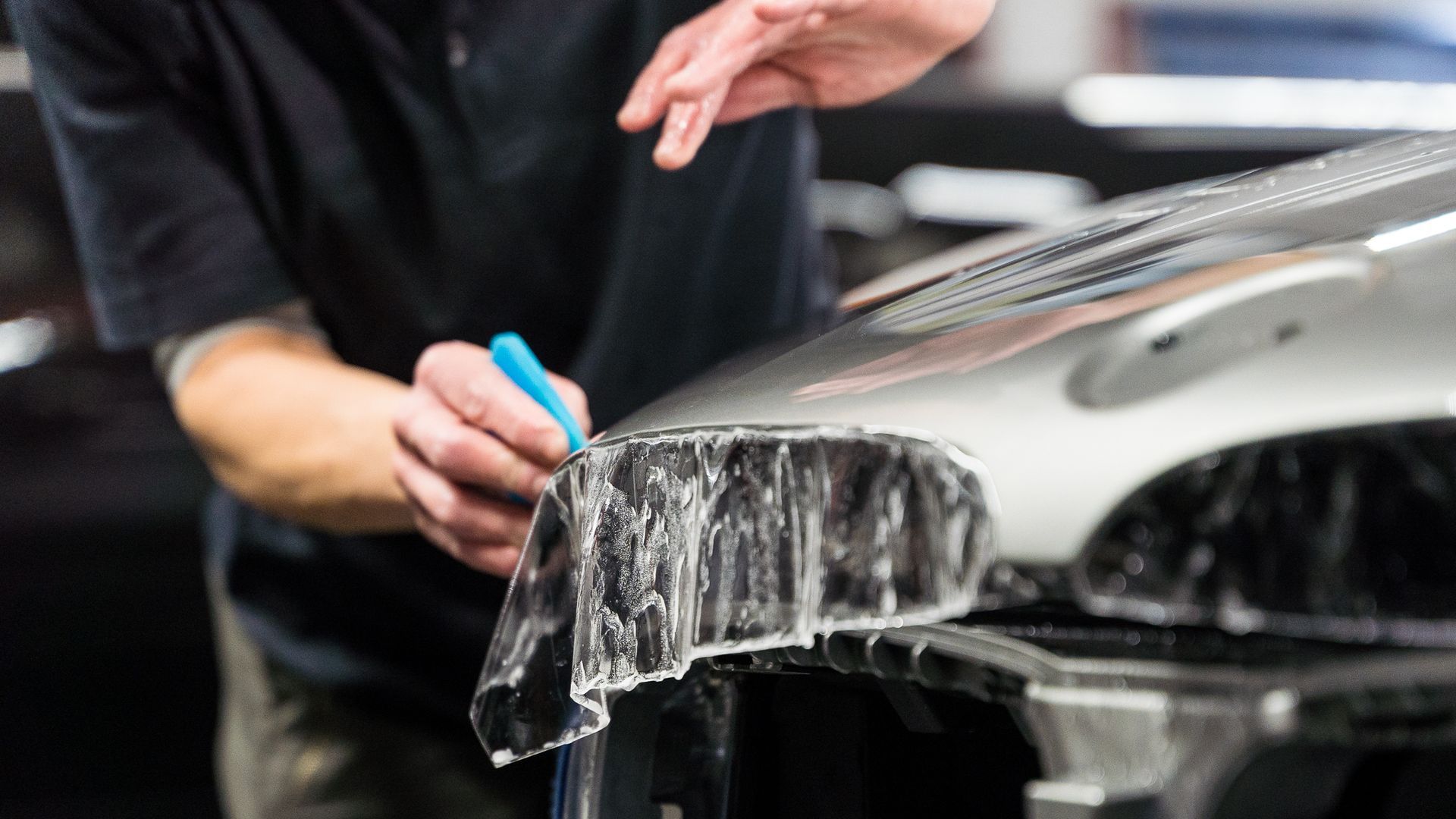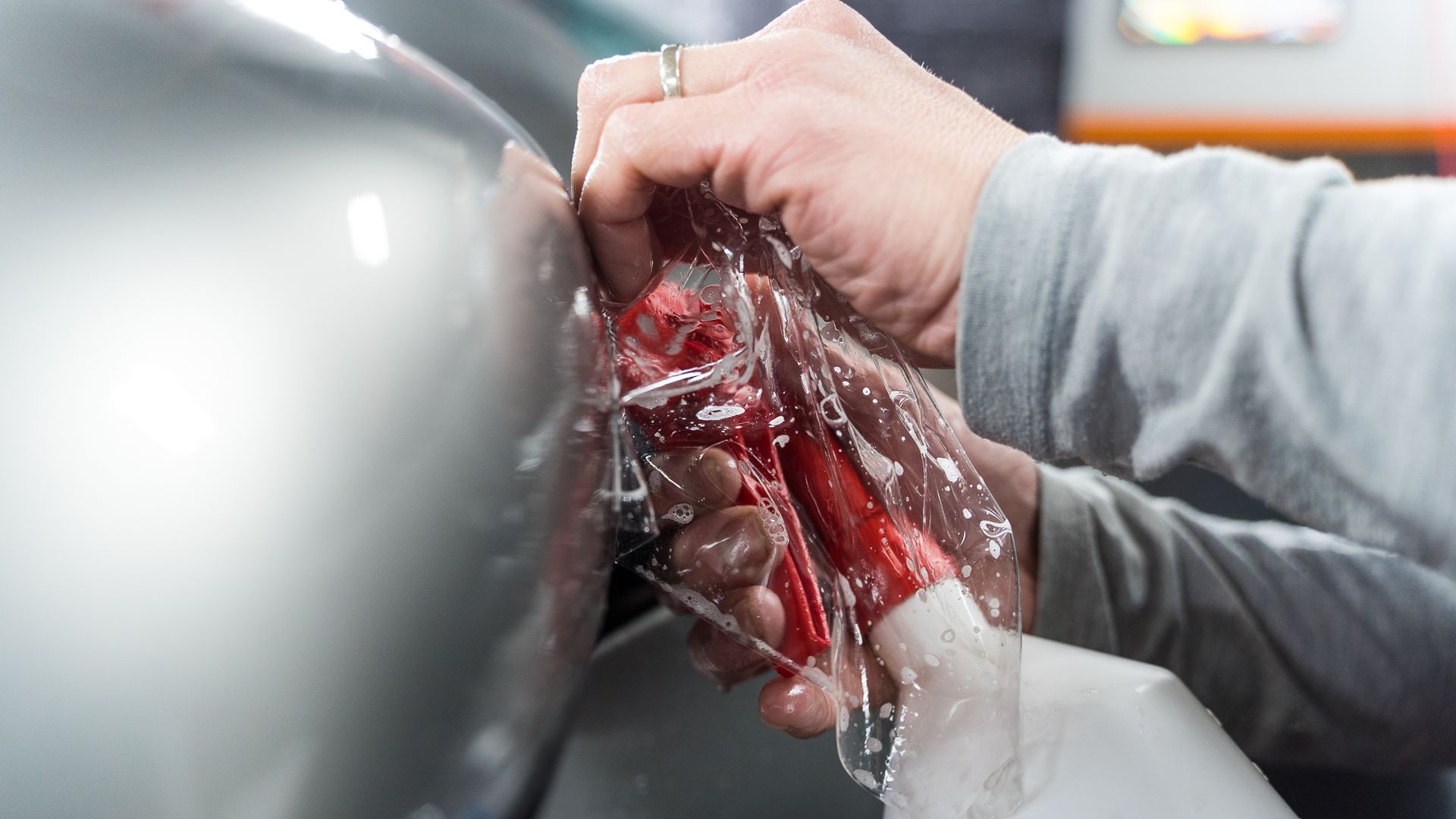Understanding How Paint Protection Film Works: A Comprehensive Guide for Car Owners
Every car owner knows the fear of seeing a scratch or chip on their vehicle’s paint. It can feel like a personal loss, no matter how small the damage. Thankfully, there's a solution that goes beyond traditional waxes and polishes—paint protection film. Many drivers are discovering the value of this invisible shield that protects their car and keeps it looking great for years. In this guide, we’ll dive into how PPF works, its benefits, and what you should know before making the investment. Whether you're a car enthusiast or just someone who wants to protect their ride, understanding PPF could save you time and money in the long run!
Paint protection film works by creating a transparent, durable layer over your vehicle's paint surface that shields it from scratches, road debris, and UV rays. Composed of advanced thermoplastic urethane, PPF is self-healing and can recover from minor abrasions when exposed to heat, effectively maintaining the aesthetic appearance of your vehicle while preserving its value over time.
Exploring Paint Protection Film
Paint protection film is a remarkable blend of science and practicality. Essentially, PPF is a clear, thermoplastic urethane film that acts like a shield for your vehicle's paint. What sets it apart is its unique ability to absorb impacts from road debris and resist scratches, enabling your car to maintain its pristine appearance even after years on the road. The protective qualities of PPF hinge on its incredible strength yet flexible composition. With a thickness of approximately 6 to 8 mils (0.006 to 0.008 inches), it's thick enough to provide robust protection without compromising the sleek lines of your car. One of the most fascinating aspects of this film is its self-healing properties. Minor scratches can vanish when exposed to heat — think about how a sunny day or warm water can restore the surface's clarity and effectiveness. This self-repairing feature enhances the longevity of the film and keeps your car looking newer for longer.
Apart from physical damage, another critical role that PPF plays is shielding against harmful UV rays. Prolonged exposure to sunlight can cause paint to fade and oxidize over time, dulling those vibrant colors we all adore. By blocking UV rays, PPF acts as a safeguard against such deterioration, ensuring that your vehicle retains its aesthetic appeal and value while you enjoy those sun-soaked drives. Though many car owners consider PPF purely as an aesthetic addition, there’s so much more beneath the surface. Knowing that PPF can significantly preserve a vehicle’s resale value is an attractive proposition for anyone investing in a high-quality car. Preventing chips and scratches helps maintain a flawless exterior, translating into better offers when it's time to sell or trade in your vehicle. Moreover, since it requires minimal maintenance thanks to its hydrophobic properties—water beads up and rolls off its surface—owners can spend less time worrying about cleanliness and more time enjoying their rides.
However, navigating the world of PPF installation comes with its set of considerations. It's crucial to choose a reputable installer; inferior application can lead to visible misalignments or bubbling that detracts from the film’s intended benefits. Professionals are trained not only in applying PPF but also in assessing vehicle surfaces to ensure optimal bonding with each inch covered. By prioritizing quality installation, you secure the long-term advantages that PPF promises while avoiding problems down the line.
Core Technology Insights
The multi-layered structure of the technology for paint protection film provides outstanding protection and aesthetic benefits. This intricate construction typically comprises three essential layers: an acrylic adhesive layer, a urethane base, and a clear coat top layer. Each of these elements plays a role in the film's success and longevity.
Key Properties of PPF
- Self-Healing: One of the standout features of modern PPFs is their ability to heal minor scratches and swirls when exposed to heat—like the warm sun or even hot water. Imagine your car's surface looking pristine again simply because the film can "remember" its original form after a bit of warmth.
- Elasticity: This is more than just a fancy word; it means that the film can stretch and flex to fit your vehicle's curves without compromising adhesion. The elasticity helps prevent lifting and creasing, ensuring that the film hugs your car’s body seamlessly.
- Optical Clarity: High-grade PPF maintains impressive optical clarity, meaning it doesn't cloud or obscure your vehicle’s paint job. You want the beauty of your car to shine through, and this property ensures that you see no haze—just pure reflection.
- Durability: PPF is built tough. Featuring resistance to abrasions, impacts, and corrosion means it shields your vehicle’s surface from everyday hazards while offering long-lasting protection.
Understanding how these properties work in tandem emphasizes why PPF is becoming an essential consideration for car owners who want to maintain their vehicles' appearance and integrity.
How It Works
When considering impact resistance, it’s fascinating to understand what happens during a drive down a gravel road where stones might fly up and hit your vehicle. Thanks to its design, when a stone strikes the film, the urethane layers absorb that impact effectively by spreading the force across a wider area. This technique means instead of focusing all that energy on one tiny spot—which could lead to damage—the film disperses it, protecting your car's precious paint below.
Think of PPF as an invisible shield that preserves your car's appearance and actively works against nature's elements, everyday wear-and-tear, and those unexpected bumps along the journey. Investing in quality PPF isn’t merely about aesthetics but also about safeguarding your vehicle for years to come. With advancements continually enhancing technology, like additional UV filtering capabilities that improve gloss finishes by up to 20%, it's evident that embracing this innovation can keep your car looking sharp while aiding in resale value. The layers come together to create an armor-like effect while being lightweight enough not to compromise performance.
Benefits of Protective Film
Paint protection film offers numerous advantages, making it an attractive option for car enthusiasts and everyday drivers alike. For starters, enhanced paint protection is perhaps one of PPF's most significant benefits. Studies have indicated that vehicles equipped with PPF exhibit up to 70% fewer scratches and chips compared to those without this protective layer. Imagine driving your prized car through gravel roads or parked near bustling parking lots, only to realize hours later that your paint remains intact and immaculate. This transformative capability brought about by advanced technology can mean the difference between a flawless finish and unsightly blemishes.
Moreover, opting for PPF can directly influence the resale value of your vehicle. A well-maintained exterior reflects the overall care you've taken with your car. According to industry observations, cars protected with PPF can see an increase of 10–15% in their resale value. To illustrate—picture a prospective buyer comparing two similar models: One boasts a sheen unmarred by chips or scratches thanks to PPF, while the other shows clear signs of wear and tear. The choice becomes evident, reflecting immediate savings on potential repairs while enhancing long-term financial returns.
In addition to financial gains, one benefit often overlooked is how PPF can significantly reduce maintenance efforts. It turns out that the film’s hydrophobic properties allow dirt to slide off easily during washes, enabling him to maintain his vehicle’s cleanliness with minimal effort. It transforms washing from a tedious chore to a quick task, freeing up more time for other activities. With all these benefits—from reducing scratches and enhancing resale value to simplifying upkeep—investing in paint protection film proves to be more than just an accessory; it’s a smart strategy for anyone who values their vehicle's appearance and worth over time.
Installation Process Explained
- Surface Preparation: The vehicle's surface must be meticulously cleaned and devoid of any wax, oil, or debris that could interfere with adhesion. To achieve this level of cleanliness, many professionals opt for a clay bar, a tool that works wonders in removing contaminants clinging stubbornly to the paint surface. It's akin to polishing; you want the surface to be smooth so that the film can stick without any imperfections looming beneath it.
- Film Application: The actual application begins with a carefully prepared slip solution that consists of water mixed with a small amount of soap. This mixture enables the PPF to glide gently across the surface during installation. By creating a slippery layer, installers can position the film accurately without committing to its final placement immediately. It’s like having time on your side, letting you adjust and align before anything sticks permanently—a crucial advantage for achieving that seamless look.
- Securing the Film: Here, a squeegee comes into play, allowing installers to remove excess slip solution while simultaneously pushing out trapped air bubbles lurking between the film and your car's paint. Using this simple yet effective tool is vital for ensuring that your PPF adheres flawlessly without unsightly bubbles that could mar its appearance over time. Additionally, precision cutting tools are often utilized during this phase to help trim the film to fit specific contours or components such as edges or seams while minimizing any potential risk to the underlying paint.
- Final Inspection: A keen eye is essential here; installers will check for imperfections or discrepancies that may warrant correction. Any minor blemishes discovered at this stage can often be rectified swiftly, ensuring that your PPF installation functions well and enhances your vehicle's aesthetic appeal. In essence, this is where attention to detail shines—transforming what could be just another product installation into an artful enhancement tailored specially for your beloved vehicle.
From start to finish, each phase of the process of installing paint protection film demands precision, patience, and craftsmanship—qualities that separate a standard job from a truly professional finish.
Maintenance and Care Tips
Although paint protection film (PPF) is designed to be low-maintenance, giving it a little extra attention can significantly prolong its life and keep your vehicle looking its best. One of the main aspects of maintaining PPF is cleaning. The golden rule here is to always use pH-neutral cleaning products. Formulated to be gentle on surfaces, these specialized cleaners remove dirt without causing harm. Harsh chemicals like solvents can break down the adhesive or damage the film itself, creating issues that could compromise its protective qualities. Automatic car washes, although convenient, frequently use abrasive brushes that can damage the surface of your PPF. Instead, opt for hand-washing techniques using soft microfiber cloths—this simple choice helps maintain the integrity of your film. After each wash, it's wise to take a moment to thoroughly inspect your PPF for any potential damages.
Checking for Damage
Regularly checking your film for signs of peeling or discoloration is crucial. Look closely around edges and high-friction areas where wear and tear usually begin. If you notice any bubbles or lifted edges, addressing these problems promptly can prevent further escalation to more significant issues. Think of this step like a health check for your vehicle's exterior; just as you would see a doctor at the first sign of trouble, inspecting PPF can save you from a more costly repair down the line.
Avoiding Wax with Dye
It might seem harmless to apply traditional wax to add shine; however, some waxes contain dyes or petroleum that could stain or degrade the film over time. This dangerous duo may impact appearance and shorten the lifespan of your precious investment. Instead, consider using specially formulated waxes for PPF. These products are designed to enhance shine without compromising protection. The beauty of paint protection film lies in its ability to shield against environmental hazards and enhance your vehicle's aesthetic appeal when properly maintained. Regular light cleaning combined with routine inspections creates a robust method to ensure functionality and appearance remain intact for years to come.
Is Paint Protection Film Worth It?
Many car owners find that the long-term benefits of installing PPF far outweigh the initial costs. A common misconception is that the price tag reflects unnecessary luxury when, in reality, it safeguards one of your most valuable assets—your vehicle. Many people fail to recognize how daily exposure to environmental elements and road debris can gradually reduce the aesthetic appeal and value of their car.
Cost vs. Value
Consider this: a full-coverage application of PPF can range from approximately $1,000 to $2,500. Although such an amount might seem hefty initially, it's significant savings compared to potential repainting or repair costs, which can easily climb into the thousands. For instance, a simple paint chip repair could cost anywhere from $300 up to $750, depending on your vehicle's make and model. Furthermore, if you factor in the time spent dealing with repairs and touch-ups over the years, investing in PPF becomes increasingly reasonable. Additionally, think about how much pride you take in your car’s appearance—taking it to a body shop for frequent repairs can be an inconvenience you’d rather avoid. When you consider how PPF protects against scratches and chips that would otherwise mar your vehicle’s exterior finish, it quickly becomes clear that it’s not merely a protective layer but a proactive step toward preserving your investment.
For many car owners, paint protection film is more than just another accessory; it's an essential safeguard for their vehicle. While the initial investment may seem daunting, the resulting peace of mind and financial savings often lead users to view it as a necessity rather than an expense to be avoided. The verdict? When evaluated thoughtfully, the benefits of PPF convincingly outweigh its initial costs. Investing in paint protection film protects your vehicle and contributes significantly to maintaining its value over time. Embrace this opportunity to safeguard your prized possession.
Unrivaled Paint Protection Film Service in Austin, TX
Shield your investment with Huracán Nero Luxury Auto Spa’s
expert paint protection film services
in Austin, TX. Our precision-cut PPF installations are designed to preserve your vehicle’s finish against rock chips, road debris, and daily wear—without compromising its original appearance. Whether you're safeguarding a daily driver or a prized exotic, our meticulous process ensures seamless coverage and long-lasting clarity. Book your appointment today and experience the craftsmanship your vehicle deserves.
